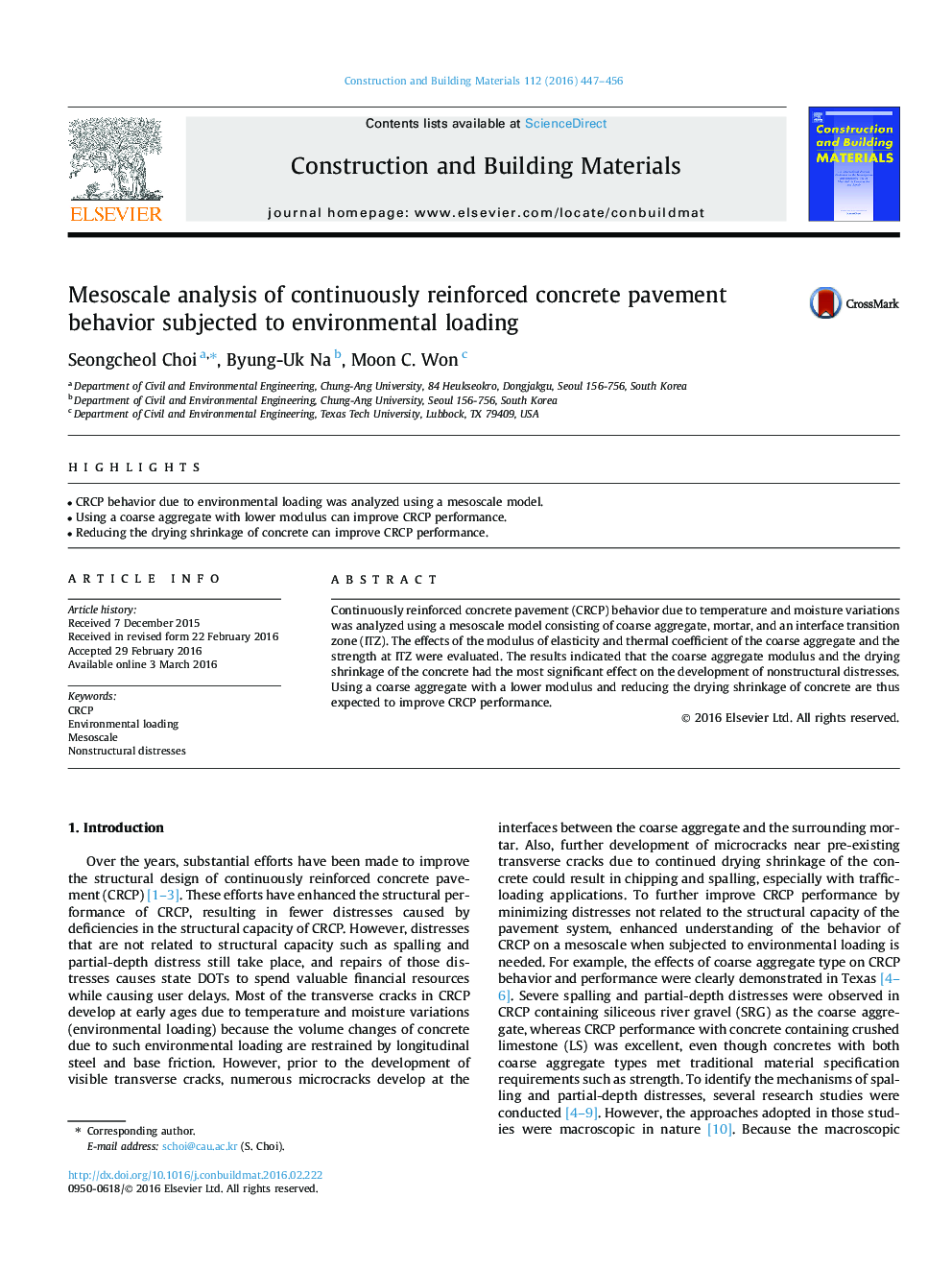| Article ID | Journal | Published Year | Pages | File Type |
|---|---|---|---|---|
| 6719174 | Construction and Building Materials | 2016 | 10 Pages |
Abstract
Continuously reinforced concrete pavement (CRCP) behavior due to temperature and moisture variations was analyzed using a mesoscale model consisting of coarse aggregate, mortar, and an interface transition zone (ITZ). The effects of the modulus of elasticity and thermal coefficient of the coarse aggregate and the strength at ITZ were evaluated. The results indicated that the coarse aggregate modulus and the drying shrinkage of the concrete had the most significant effect on the development of nonstructural distresses. Using a coarse aggregate with a lower modulus and reducing the drying shrinkage of concrete are thus expected to improve CRCP performance.
Keywords
Related Topics
Physical Sciences and Engineering
Engineering
Civil and Structural Engineering
Authors
Seongcheol Choi, Byung-Uk Na, Moon C. Won,
